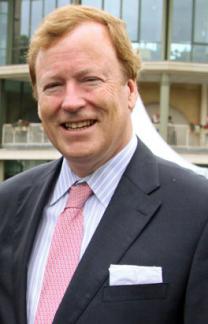Licensing process to catapult US-SMR export potential
The US small modular reactor (SMR) market is inching towards becoming a fully fledged part of the nuclear industry, the question is how can all this progress spur an SMR export market for US companies?

Design and certification applications for SMRs are now ready to be reviewed by the Nuclear Regulatory Commission, as more ideas are being funnelled through from the drawing board, to being potentially considered for licensing.
Barack Obama’s administration has continued to voice its support for SMRs, as part of the 2015 fiscal budget, plans for public-private programmes to develop small reactors were included.
Recently the Department of Energy (DOE), announced a total of $12.5bn being allocated, for innovative nuclear projects through loan guarantee solicitations.
Small modular reactors, which are 300 megawatts or smaller, are on the list of ideas that that DOE would like to facilitate.
Licensing process to catapult SMR potential
David Blee, the chief executive of the United States Nuclear Infrastructure Council, reflects on the SMR export market: “I think that there is undoubted potential for the SMR export market for US based companies.”
“In particular for areas that wish to increase their power networks with comparatively low capital investment, or areas which do not have a transmission system in place, SMRs could be the genesis of a new distribution model.”
“There is evidence that there is demand for SMRs from all parts of the world. The UK has been attracted to SMRs, as part of their public schedule for the increase of the use of nuclear power.”
“Currently there have also been discussions which have taken place in China, other interested parties include Poland and Saudi Arabia. Where there is growing demand for electricity, and for low carbon electricity, there is always the potential for demand for SMRs,” he adds.
Licensing and facilities evolution
One aspect of the SMR market Blee says will have to evolve is the licensing process and how the licences are approved.
This will catapult the SMR market into establishing a strong customer base in the US, once that has been achieved, the focus can then be shifted onto creating an international market for US SMR exports.
The Infrastructure Council has also carried out a mapping progress report on supply chain issues regarding SMRs.
They concluded that while there are many positives on the delivery capability on the supply chain, there were still some areas which needs improving.
Factory assembly facilities were deemed to be not always up to the standard required, and its still questionable whether economies of scale could be achieved, if there was a wave of large orders for the SMR market.
This is one of many other areas that will be reviewed, as part of the council’s second phase report on the progress of the US supply chain and SMRs.
Blee enthuses: “I think that large and more conventional reactors will remain the work horse for nuclear power, but I think that SMRs are a very viable option in the right circumstance.”
“In the long term, SMRs should have a significant market share of the reactors that are built beyond 2030.”
After being selected by the DOE in 2012 in a cost sharing programme, Bechtel in partnership with Babcock and Wilcox have formed the Generation mPower SMR, the mPower model is a 180 MWe light water, steam generating SMR.
The project suffered a setback in April last year, as Babcock and Wilcox who own 90% of the project, decided to significantly scale back their planned investment, a decision which was received disappointingly by Bechtel.
Supply chain sentiment
A spokesperson for Bechtel is still optimistic about the development of an SMR export market for US companies: “All SMR technologies developed in the US will view the market as global. This is critical as the growth potential in the near to mid- term is significantly greater outside of the domestic market. The US manufacturing market capability is well positioned to follow the deployment of their technologies globally.
“In fact, as an example, SMRs do not require ultra-heavy forgings, and these can be accomplished within the existing US manufacturing infrastructure, with potential for technology transfer to host country manufacturing.
“Our expectation is that in the near term, potential host countries, such as the UK, Canada, and China, also have the manufacturing assets to support deployments.”
Standardisation of designs
Bechtel also believes that for the technology to evolve and appeal to future export markets, there has to be a standardisation of designs, alongside passive safety features, modular construction, and perhaps most importantly, affordable costs are essential for broad appeal.
“The supply chain will also need to develop repeatable manufacturing capability based on multiple deployments as backlog. From a manufacturing perspective, this will assure that the associated labour becomes highly proficient,” spokesperson explains.
“During host country deployments, the SMR industry will need to accumulate best practices to facilitate development of SMR-specific labour skills resulting in increased productivity.”
To develop the export market, Bechtel’s vision is that in the near term it is critical to achieve nuclear certifications for SMR technology in one or more host countries.
In the long term these licensed designs will become the platforms for global development.
Nuclear innovators across the US will no doubt keep inching towards what could be a golden ticket into a global market.
